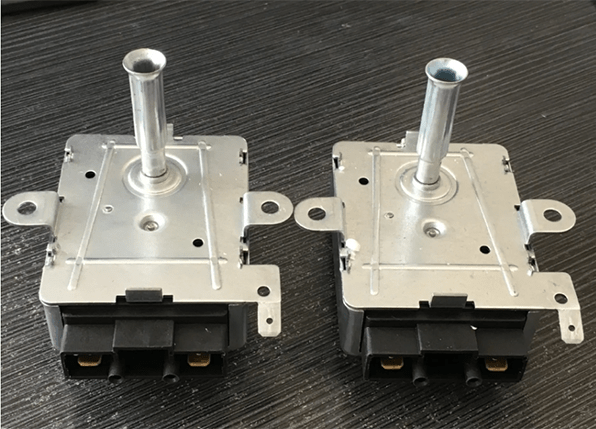Video: Troubleshooting Guide: Convection Oven Fan Not Spinning

Figure 1: Oven fans.
The convection oven, with its innovative fan system, has revolutionized the way we cook, offering even heat
distribution and faster cooking times. However, when the convection
oven fan refuses to spin, it can disrupt this efficiency.
In this comprehensive guide, we'll explore the potential reasons behind a convection oven fan not spinning and
provide a step-by-step troubleshooting process to help you get your oven back in working order.
1. Understanding the Importance of the Convection Oven Fan
Even Heat Distribution
The convection oven fan plays a crucial role in distributing hot air evenly throughout the oven. This ensures that
every corner of the oven maintains a consistent temperature, preventing uneven cooking.
Faster Cooking Times
The spinning fan helps in reducing cooking times. By constantly circulating hot air, it facilitates quicker and more
efficient cooking, a key advantage of convection ovens.
Browning and Crisping
The consistent airflow from the fan promotes better browning and crisping of food surfaces. Without the fan, these
desirable outcomes may be compromised.

Figure 2: Fan oven.
2. Common Issues Leading to a Convection Oven Fan Not Spinning
1.Power Supply Problems
A disrupted power supply due to faulty outlets, circuit
breakers, or power cords can lead to the fan not spinning. Ensure a reliable power source for the oven.
2.Damaged Fan Bearings
The bearing of the oven fan is a key component to maintain the stable rotation of the fan. If the bearing is
damaged, the fan will not rotate and the air flow in the oven will not be smooth, which will affect the normal
baking effect of the oven. At this time, the fan bearings need to be replaced.
3.Motor Failure
Over time, the fan motor may wear out or burn,
preventing the fan from spinning. Regular maintenance and prompt replacement can address this issue.

Figure 3:Oven fan motors.
4.Blockages and Debris
Accumulated debris or objects blocking the fan blade can impede its rotation. Regular cleaning and inspection can
prevent this problem.
5.Damaged Fan Capacitor
The oven fan requires a momentary high voltage when starting up, which requires the support of the fan
capacitor. If the fan capacitor is damaged, the oven fan will not start. At this time, the capacitor needs to
be replaced.
6.Electronic Component Malfunctions
Issues with the thermostat, temperature sensor, control board,
or wiring can disrupt the
communication necessary for the fan to operate. Thorough inspection and replacement of faulty components are
essential.
3. Troubleshooting Steps for a Convection Oven Fan Not Spinning
3.1 Check Power Supply
Ensure that the oven is receiving power. Check the power outlet, circuit breaker, and power cord for any issues. A lack of power can prevent the fan from spinning.
3.2 Inspect the Fan Blade
Examine the fan blade for any obstructions or damage. A foreign object blocking the blade or a damaged blade itself can hinder its rotation. Gently clear any debris and replace a damaged blade if necessary.

Figure 4: Oven fan.
3.3 Fan Motor Inspection
The fan motor is responsible for driving the fan blade. Check for any signs of wear, burn marks, or unusual noises. A malfunctioning motor may need replacement. Consult the oven's manual for guidance on accessing and replacing the fan motor.
3.4 Temperature Sensor Test
The oven's temperature sensor communicates with the thermostat to regulate the fan. A faulty sensor can disrupt this communication. Use a multimeter to check the sensor's resistance. If it deviates from the expected values, consider replacing it.
3.5 Thermostat Evaluation
The thermostat controls when the fan should operate based on the oven's temperature. A malfunctioning thermostat may not signal the fan to spin. Test the thermostat for accuracy and replace it if necessary.

Figure 5: Oven thermostat.
3.6 Wiring and Controls
Examine the wiring connecting the fan, thermostat, and controls. Loose connections or damaged wires can interrupt the power supply to the fan. Ensure all connections are secure and replace damaged wiring.
3.7 Oven Control Board Examination
The oven control board regulates various functions, including the fan. Inspect the board for signs of damage, such as burnt areas or loose components. Replace the control board if necessary.
4. Preventive Maintenance for Convection Ovens
Regular Cleaning
Prevent debris buildup by cleaning the oven, especially around the fan area, regularly. This simple practice can
contribute to the longevity of the fan motor and components.
Prompt Repairs
Address any issues promptly to prevent further damage. Regularly inspecting and maintaining the oven's components
can catch potential problems before they escalate.
Professional Inspection
Periodic professional inspections can identify and address issues that may not be apparent during routine cleaning.
A trained technician can perform a thorough assessment of the oven's components.

Figure 6:Fan forced oven.
5. Conclusion
A convection oven fan not spinning can disrupt the efficiency and advantages offered by this modern kitchen
appliance. By following the troubleshooting steps outlined in this guide, you can identify and address the root
cause of the issue.
Regular maintenance and prompt repairs are key to ensuring your convection oven operates at its best, providing you
with evenly cooked and delicious meals for years to come.



